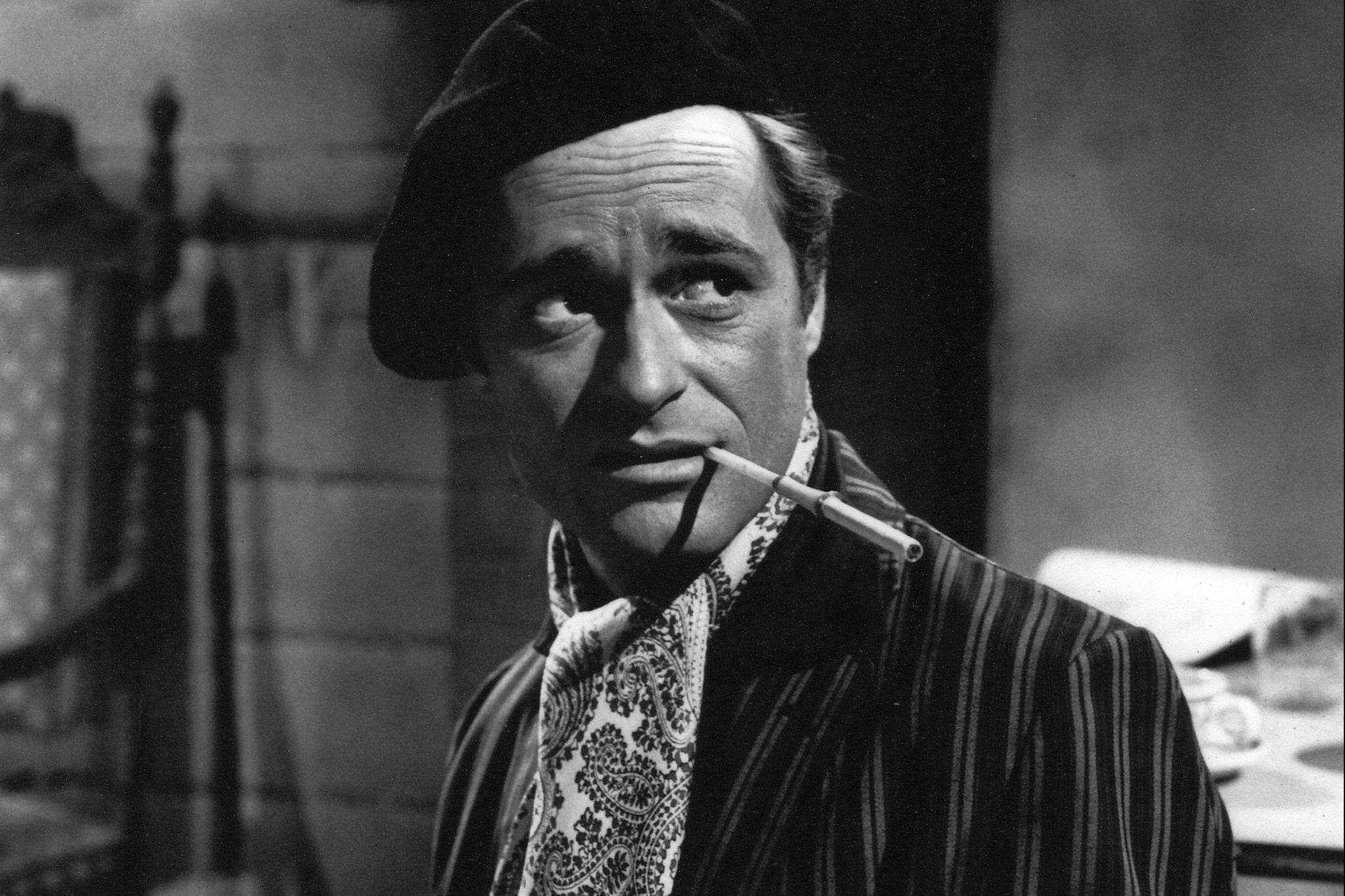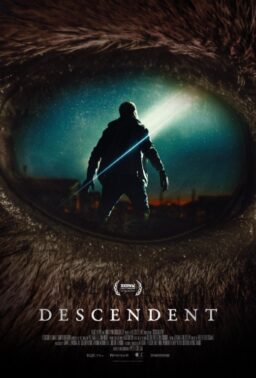Dick Miller is dead.
If I were to announce this news to a group of people whose lives did not necessarily revolve around the world of film, there is an excellent chance that such news would be regarded with little more than a well-meaning shrug. If I were to accompany that news with a picture of him taken from one of the 182 roles that IMDb credits him with in a screen career that began in 1955, my guess is that most of those people would recognize his face from any number of movies that they had seen and enjoyed over the years and remark “Oh, that guy!” Simply put, Dick Miller was among the greatest “That Guy!” actors in cinema history (When the long-overdue documentary celebrating the man and his work was finally made and released in 2014, it was appropriately entitled “That Guy Dick Miller.”). He rarely got the lead role, he got the leading lady even less, and the vast majority of the titles that he appeared in throughout his career were not of the sort that one might expect to see programmed on TCM or turning up in the Criterion Collection. And yet, he ended up developing a large and loyal cult following over the years from generations of fans (a number of whom would put him in films of their own) who responded to his distinctive look, his quirky manner, and his innate ability to steal a scene from practically everyone/thing that he appeared opposite, be they comely starlet, bloodthirsty alien or the Ramones.
Richard Miller was born December 25, 1930 in the Bronx. His early years (chronicled in Caelum Vatnsdal’s exhaustively detailed and fascinating biography You Don’t Know Me, But You Love Me: The Lives of Dick Miller) saw him doing everything from appearing on stage to working at Bellevue to a stint in the Navy. Eventually, he made his way out to Los Angeles in the mid-1950s and eventually made the acquaintance of an up-and-coming producer of low-budget exploitation movies named Roger Corman. At the time, Miller was trying to make it as a writer but Corman was in greater need of actors, and so he came to be cast as an Indian in his very first movie, a ten-day wonder Western named “Apache Woman.” Because actors were apparently really scarce, Miller was recruited to play a second part of one of the locals in the town where it was set and yes, it does lead up to a moment where his local character shoots his Indian character.
That was his first Corman production, but it would be far from his last. The producer/director began to use him regularly, perhaps because he was usually available and perhaps because he brought a real sense of personality to even the most generically written roles. Take “Not of This Earth” (1957), for example. The film itself is pretty silly—something about a human-looking alien charged with harvesting blood from the unsuspecting denizens of Southern California to send back home in an attempt to save the population of his dying planet. In one draft of the screenplay, a brush salesman turns up at the door of the home where the alien has made its base of operations (don’t ask) and meets the inevitable grisly end. Corman gave the part of the salesman to Miller, who proceeded to change the item he was pushing to a vacuum cleaner and ended up ad-libbing all his dialogue to make the character seem more like a hipster on the make. The result was a hilarious scene-stealing turn and the first real demonstration of the quirky personality that would come to be his signature. Later that year, Corman gave Miller his first lead role in “Rock All Night,” a “The Petrified Forest”-style drama (albeit with music breaks by The Platters), in which he played a short cynical guy who is one of a few people taken hostage at a bar by a couple of criminals, and who manages to save the day and win the girl.
Over the next couple of years, Miller would make a number of films for Corman—“Sorority Girl” (1957), “Carnival Rock” (1957), “Naked Paradise” (1957) and the heroic lead in “War of the Satellites” (1958)—and appeared in brief roles on TV shows like “M Squad,” “Dragnet” and “The Untouchables” before appearing in what would become perhaps his most beloved film amongst his hardcore fan base. “A Bucket of Blood” (1959) is an outrageously funny black comedy in which he played Walter Paisley, an oddball busboy at a beatnik cafe who yearns to one day become a true hepcat artist. Blending together cheerfully gruesome black humor and droll satire of the beatnik culture of the times, this film probably would have stood out among the schlock movies of the era under any circumstances, but Miller’s performance moves it from being merely a great B-movie to a great movie, period. His take on Walter is hilarious and bizarre, of course, but he also gives the character and his failed artistic dreams a genuine sense of pathos that probably would have been ignored in the hands of most actors in order to concentrate on the ghoulishness.
Unfortunately, that would be the last time that Miller would ever really have the lead role in a film, although the next time that Corman came to him with a project, he did offer Miller the lead in that one as well. Alas, Miller read the script, felt that it was largely a rehash of “A Bucket of Blood” and decided to pass on playing the lead in the talking man-eating plant opus “Little Shop of Horrors” (1960). In later years, he would lament passing on that part but as much as I love that movie, I think that he may have made the right decision in the sense that the lead role in that one was maybe a tad too much of a Jerry Lewis-style schnook for him to believably portray. Besides, the part that he did wind up playing, that of a plant-eating man, supplied it with some of its biggest laughs. For the next decade or so, however, his career was a bit of a struggle. There were always appearances to be had in Corman productions—the most notable of which found him kibitzing with Don Rickles as a carnival heckler in “X: The Man with the X-Ray Eyes” (1963), desperately attempting to explain the plot of “The Terror” to co-star Jack Nicholson in a fit of wild exposition and squaring off against dirty bikers in “The Wild Angels”—and small roles on the small screen in shows like “Dragnet 1967,” “Combat” and “Mannix.” However, roles in major studio films were few and far between and when he did turn up in something bigger like “The Dirty Dozen” (1967), “The St. Valentines Day Massacre” (1967) or “The Legend of Lylah Clare” (1968), they were in bit parts that received no formal credit.
In the 1970s, Miller still found himself doing the occasional small part for Corman, who had just formed his new production company New World Pictures and who perhaps looked upon Miller as some kind of good luck talisman. As it turned out, a number of the young filmmakers who Corman began hiring to work for him—people like Jonathan Kaplan and Jonathan Demme—were people who recalled seeing and liking Miller’s past work and leaped at the chance to included him in their own films. The most notable of these was Joe Dante, a movie-mad trailer editor who, along with colleague Allan Arkush, made a bet with Corman that they could make the cheapest movie in New World’s history. The film they came up with was “Hollywood Boulevard” (1976), an amiably silly satire of the world of B-movie production in which the comely cast of a low-budget schlock-fest is bumped off one by one by a masked killer. The film, not surprisingly, was filled with in-jokes. But perhaps the funniest one came when Miller was cast as the amiably sleazy agent of the lead, a character who was then given the name Walter Paisley. Not only was it a funny joke but it was one that stuck. Throughout the rest of his career, he would play additional characters named Walter Paisley a number of times.
“Hollywood Boulevard” marked the beginning of a long and fruitful collaboration with Dante, who would go on to include him in practically every single thing he made. In “Piranha” (1978), Miller was a sleazy water park owner not especially concerned with reports of a pack of deadly piranha heading his way. He turned up as the owner of an occult-themed bookshop dispensing werewolf lore in “The Howling” (1981), a diner counterman in “Twilight Zone: The Movie” (1983), Mr. Futterman, a snowplow driver who meets a seemingly ugly end at the hands of the “Gremlins” (1984), a starry-eyed cop in “Explorers” (1985), a cabbie in “Innerspace” (1987), a ventriloquist stuck with an unfamiliar dummy in a deleted sequence from “Amazon Women on the Moon” (1987), a garbageman in “The Burbs” (1989), the not-so-dead Mr. Futterman in “Gremlins 2: The New Batch” (1990), a for-hire agitator working for a B-movie magnate in “Matinee” (1993), a detective looking for “Runaway Daughters” (1994), a deliveryman in “Small Soldiers” (1998) and a studio security guard in “Looney Tunes: Back in Action” (2003) among them. Some of these parts were bigger than others (his appearances in later Dante films like “The Hole” (2011) and “Burying the Ex” (2014) were barely cameos) but no matter how big or small, they were eagerly anticipated and would often inspire cheers from viewers in the know.
Although Dante would become his most frequent non-Corman collaborator, he was far from the only notable filmmaker to include Miller their work. He worked with Martin Scorsese on “New York, New York” (1977) (opposite Robert De Niro and Liza Minelli, no less) and “After Hours” (1985), where he gets to essentially deliver that film’s mantra (“Different rules apply when it gets this late. You know what I mean? It’s like after hours”), Robert Zemeckis on “I Wanna Hold Your Hand” (1978) and “Used Cars” (1980) and Steven Spielberg on “1941” (1979). He had brief but standout scenes in such genre classics as “Rock n Roll High School” (1979) as a police chief trying to come to terms with the Ramones (“They’re ugly. Ugly, ugly people”) and “The Terminator” (1984), where he played the talkative gun shop owner opposite Arnold Schwarzenegger. In addition, there was a steady stream of appearances on television (including episodes of “Police Squad!” and “V”) and cheap B movies, though these were now more likely to turn up on cable and on video than in the local drive-in. He even had a recurring role on the TV series version of “Fame” that lasted for several years in the Eighties. No matter how big or small the project or the part, you never saw him just coasting through things. If he did a project where his presence was not one of the key high points of the endeavor, I do not immediately recall it.
As some of you may have guessed, Dick Miller was a true favorite of mine—in my bio at this site, I cite him as my all-time favorite actor—and even had the occasion to meet him once. When the “That Guy Dick Miller” documentary was making its way through the festival circuit a few years ago, the Chicago Critics Film Festival, on which I serve as a programmer, not only screened the film but turned it into an event that also featured a showing of “A Bucket of Blood” and an appearance by Miller and his wife, Lainie, at a Q&A that I co-conducted with colleague Steve Prokopy. Now I have met any number of famous people over the years as a result of my choice in career, but this was one of the very few times where I found myself a bit nervous, no doubt recalling that age-old warning about the dangers of meeting one’s heroes. Well, in this particular case, that saying proved to be a load of shit because I met one of my heroes and it was awesome. While I am certain that I probably came across as some kind of overly enthusiastic goofball, he certainly never let it show. After my inevitably rambling intro, he proceeded to charm everyone in the audience, told a ton of great stories and then proceeded to sign autographs for everyone who asked for one, even though no one would have begrudged him for begging off after a while. From a journalistic standpoint, my contributions to that day were probably negligible at best but that was hardly the point. That day, I got to tell one of my heroes how much he and his body of work meant to me over the years while he was sitting right there and that made me about as giddy as I am able to get. Now, albeit under much sadder circumstances, I hope I have been able to do the same for you.












